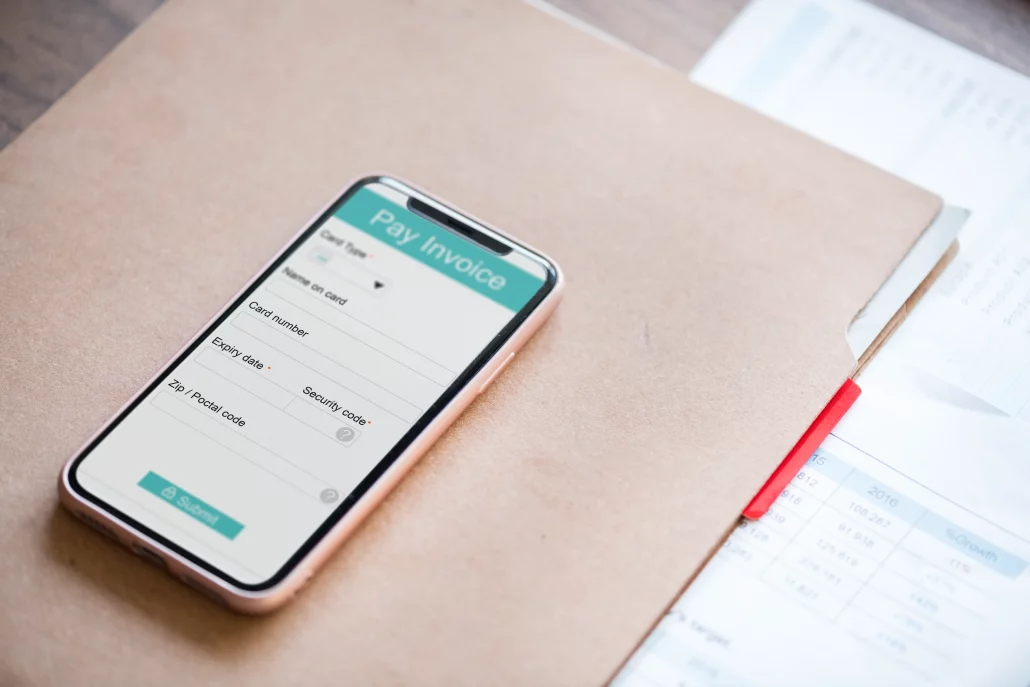In this post, we look at the differences between a supplier e-invoicing solution and traditional invoicing so that we can discover how to evolve your business’s financial operations.
Are you tired of the inefficiencies of traditional invoicing methods? Do you struggle with manual data entry errors, delayed payments, and increasing costs?
Many businesses are facing similar challenges in their invoicing processes. The process of billing customers for goods or services rendered, is a fundamental aspect of any business operation. However, the methods by which invoices are generated and processed can vary greatly.
Traditional Invoicing: The Conventional Approach
Traditional invoicing involves the manual creation, printing, and mailing of paper invoices to customers. This process has been the standard for many years and is still widely used by businesses around the world. Here’s a breakdown of its characteristics:
- Traditional invoicing requires manual input of data, including customer information, product details, and pricing. This manual process is time-consuming and prone to errors, leading to potential discrepancies in invoices.
- Paper invoices are physically printed and mailed to customers, resulting in additional costs for postage and stationery. Moreover, paper invoices can get lost in transit or delayed, causing delays in payment processing.
- Tracking the status of paper invoices is challenging, as there is no centralised system to monitor their progress. This lack of visibility can lead to delays in payment and difficulties in reconciling accounts.
Watch our video below:
Supplier E-Invoicing: The Digital Approach
Supplier e-invoicing, also known as electronic invoicing or e-billing, leverages digital technology to automate the invoicing process. Instead of paper documents, invoices are generated and transmitted electronically between suppliers and customers. Let’s explore its key features:
- Supplier e-invoicing streamlines the invoicing process by automating repetitive tasks such as data entry and invoice delivery. This reduces the likelihood of errors and speeds up the invoicing cycle, enabling faster payments.
- By eliminating the need for paper, printing, and postage, supplier e-invoicing can significantly reduce invoicing costs for businesses. Additionally, the faster processing times lead to improved cash flow and reduced overhead expenses.
- e-Invoicing platforms provide real-time visibility into the invoicing lifecycle, allowing businesses to track the status of invoices from creation to payment. This transparency facilitates better cash flow management and helps identify any bottlenecks in the process.
Comparative Analysis
Looking at both invoicing methods, we compare their differences.
Firstly, supplier e-invoicing has a stronger efficiency due to its automation capabilities. Digital invoices can be processed and delivered much faster than paper invoices, reducing processing times and improving cash flow. Meanwhile, traditional invoicing takes time to process, manage, organise, and maintain.
While both methods are susceptible to errors, supplier e-invoicing minimises the risk of manual mistakes through automation and data validation checks. This leads to more accurate invoices and reduces the likelihood of disputes with customers.
Supplier e-invoicing can also offer significant cost savings, primarily due to the elimination of paper-based processes and postage expenses. Businesses can then redirect these savings towards other strategic initiatives or investments.
When it comes to security, supplier e-invoicing is naturally better than traditional invoicing due to its digital nature. Most web-based or online platforms typically employ advanced security measures to protect sensitive financial data, such as encryption and secure authentication protocols. This enhances data security and reduces the risk of fraud or unauthorised access.
Conclusion
All in all, supplier e-invoicing holds a significant advantage over traditional invoicing. Embracing digital technology and automation can help you streamline your invoicing processes, reduce costs, and maximise efficiency. While not completely flawless, the benefits far outweigh the drawbacks, becoming a strong point for business growth and competitiveness.
Learn more about B2BE’s Supplier e-Invoicing solution.
About B2BE
B2BE delivers electronic supply chain solutions globally, helping organisations to better manage their supply chain processes, providing greater levels of visibility, auditability and control. We’re driven by a passion for what we do, inspired by innovation, and underpinned by a wealth of knowledge. With over 20+ years of experience, the B2BE teams operate worldwide.
For more information, visit www.b2be.com.

